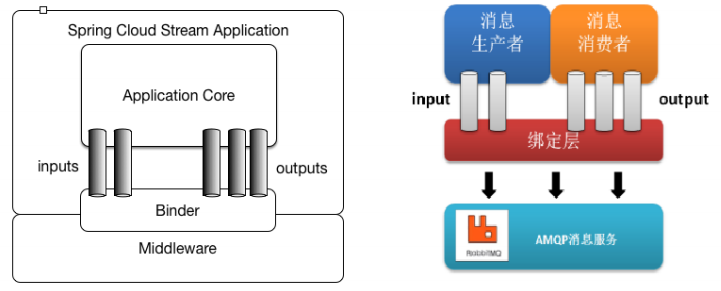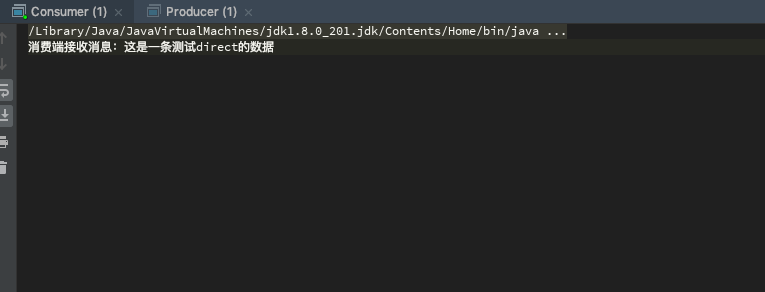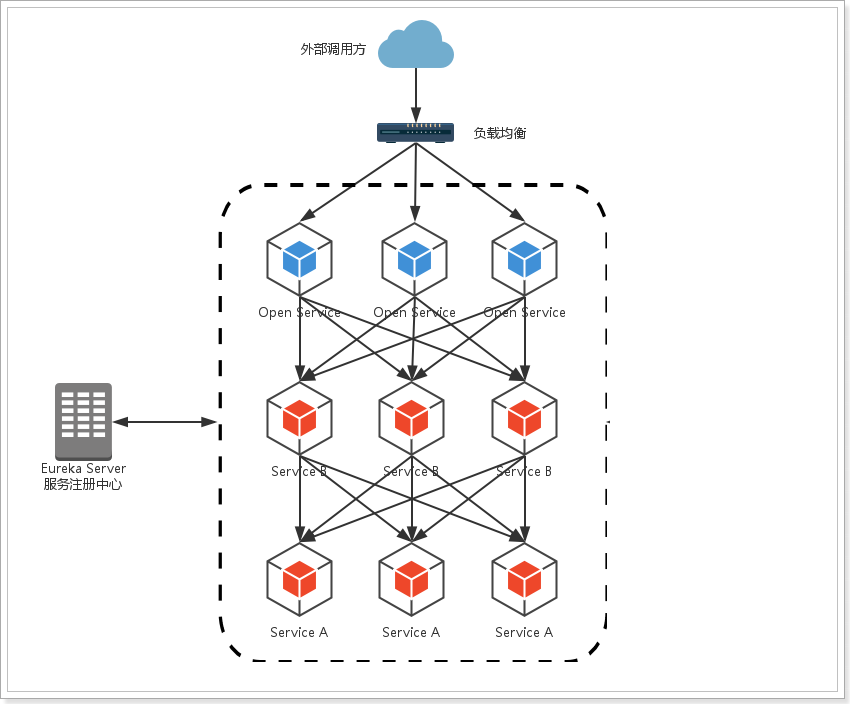高并发编程JUC之进程与线程高并发编程JUC之进程与线程
1.准备
pom.xml 依赖如下:
<properties><project.build.sourceEncoding>UTF-8</project.build.sourceEncoding><maven.compiler.source>1.8</maven.compiler.source><maven.compiler.target>1.8</maven.compiler.target></properties><dependencies><dependency><groupId>junit</groupId><artifactId>junit</artifactId><version>4.11</version><scope>test</scope></dependency><!-- https://mvnrepository.com/artifact/org.projectlombok/lombok --><dependency><groupId>org.projectlombok</groupId><artifactId>lombok</artifactId><version>1.18.22</version><scope>provided</scope></dependency><dependency><groupId>org.slf4j</groupId><artifactId>slf4j-api</artifactId><version>1.7.22</version></dependency><dependency><groupId>ch.qos.logback</groupId><artifactId>logback-classic</artifactId><version>1.2.3</version></dependency><dependency><groupId>org.junit.jupiter</groupId><artifactId>junit-jupiter</artifactId><version>RELEASE</version><scope>compile</scope></dependency></dependencies>
logback.xml 配置如下:
<?xml version="1.0" encoding="UTF-8"?><configuration scan="true"><appender name="STDOUT" class="ch.qos.logback.core.ConsoleAppender"><encoder><pattern>%date{HH:mm:ss} [%t] %logger - %m%n</pattern></encoder></appender><logger name="c" level="debug" additivity="false"><appender-ref ref="STDOUT"/></logger><root level="ERROR"><appender-ref ref="STDOUT"/></root></configuration>
2.进程与线程
2.1 进程与线程
进程
程序由指令和数据组成,但这些指令要运行,数据要读写,就必须将指令加载至 CPU,数据加载至内存。在 指令运行过程中还需要用到磁盘、网络等设备。进程就是用来加载指令、管理内存、管理 IO 的 。
当一个程序被运行,从磁盘加载这个程序的代码至内存,这时就开启了一个进程。
进程就可以视为程序的一个实例。大部分程序可以同时运行多个实例进程(例如记事本、画图、浏览器 等),也有的程序只能启动一个实例进程(例如网易云音乐、360 安全卫士等)
线程
一个进程之内可以分为一到多个线程。
一个线程就是一个指令流,将指令流中的一条条指令以一定的顺序交给 CPU 执行
Java 中,线程作为最小调度单位,进程作为资源分配的最小单位。 在 windows 中进程是不活动的,只是作 为线程的容器
二者对比
进程基本上相互独立的,而线程存在于进程内,是进程的一个子集
进程拥有共享的资源,如内存空间等,供其内部的线程共享
进程间通信较为复杂
- 同一台计算机的进程通信称为 IPC(Inter-process communication)
- 不同计算机之间的进程通信,需要通过网络,并遵守共同的协议,例如 HTTP
线程通信相对简单,因为它们共享进程内的内存,一个例子是多个线程可以访问同一个共享变量
线程更轻量,线程上下文切换成本一般上要比进程上下文切换低
2.2 并行与并发
单核cpu下,线程实际还是串行执行的。操作系统中有一个组件叫做任务调度器,将 cpu 的时间片(windows 下时间片最小约为 15 毫秒)分给不同的程序使用,只是由于 cpu 在线程间(时间片很短)的切换非常快,人类感觉是同时运行的 。总结为一句话就是: 微观串行,宏观并行 。
一般会将这种线程轮流使用 CPU 的做法称为并发, concurrent
| CPU | 时间片 1 | 时间片 2 | 时间片 3 | 时间片 4 |
|---|---|---|---|---|
| core | 线程 1 | 线程 2 | 线程 3 | 线程 4 |
多核 cpu下,每个 核(core) 都可以调度运行线程,这时候线程可以是并行的。
| CPU | 时间片 1 | 时间片 2 | 时间片 3 | 时间片 4 |
|---|---|---|---|---|
| core1 | 线程 1 | 线程 2 | 线程 3 | 线程 4 |
| core2 | 线程 4 | 线程 4 | 线程 2 | 线程 2 |
引用 Rob Pike 的一段描述:
并发(concurrent)是同一时间应对(dealing with)多件事情的能力 。
并行(parallel)是同一时间动手做(doing)多件事情的能力。
2.3 应用
$\textcolor{Green}{*应用之异步调用(案例1)} $
需要等待结果
这时既可以使用同步处理,也可以使用异步来处理
join 实现(同步)
static int result = 0;private static void test1() throws InterruptedException {log.debug("开始");Thread t1 = new Thread(() -> {log.debug("开始");sleep(1);log.debug("结束");result = 10;}, "t1");t1.start();t1.join();log.debug("结果为:{}", result);}
输出
20:30:40.453 [main] c.TestJoin - 开始20:30:40.541 [Thread-0] c.TestJoin - 开始20:30:41.543 [Thread-0] c.TestJoin - 结束20:30:41.551 [main] c.TestJoin - 结果为:10
评价
需要外部共享变量,不符合面向对象封装的思想
必须等待线程结束,不能配合线程池使用
Future 实现(同步)
private static void test2() throws InterruptedException, ExecutionException {log.debug("开始");FutureTask<Integer> result = new FutureTask<>(() -> {log.debug("开始");sleep(1);log.debug("结束");return 10;});new Thread(result, "t1").start();log.debug("结果为:{}", result.get());}
输出
10:11:57.880 c.TestSync [main] - 开始10:11:57.942 c.TestSync [t1] - 开始10:11:58.943 c.TestSync [t1] - 结束10:11:58.943 c.TestSync [main] - 结果为:10
评价
规避了使用 join 之前的缺点
可以方便配合线程池使用
private static void test3() throws InterruptedException, ExecutionException {
ExecutorService service = Executors.newFixedThreadPool(1);log.debug("开始");Future<Integer> result = service.submit(() -> {log.debug("开始");sleep(1);log.debug("结束");return 10;});log.debug("结果为:{}, result 的类型:{}", result.get(), result.getClass());service.shutdown();
}
输出
10:17:40.090 c.TestSync [main] - 开始10:17:40.150 c.TestSync [pool-1-thread-1] - 开始10:17:41.151 c.TestSync [pool-1-thread-1] - 结束10:17:41.151 c.TestSync [main] - 结果为:10, result 的类型:class java.util.concurrent.FutureTask
评价
仍然是 main 线程接收结果
get 方法是让调用线程同步等待
自定义实现(同步)
见模式篇:保护性暂停模式
CompletableFuture 实现(异步)
private static void test4() {// 进行计算的线程池ExecutorService computeService = Executors.newFixedThreadPool(1);// 接收结果的线程池ExecutorService resultService = Executors.newFixedThreadPool(1);log.debug("开始");CompletableFuture.supplyAsync(() -> {log.debug("开始");sleep(1);log.debug("结束");return 10;}, computeService).thenAcceptAsync((result) -> {log.debug("结果为:{}", result);}, resultService);}
输出
10:36:28.114 c.TestSync [main] - 开始10:36:28.164 c.TestSync [pool-1-thread-1] - 开始10:36:29.165 c.TestSync [pool-1-thread-1] - 结束10:36:29.165 c.TestSync [pool-2-thread-1] - 结果为:10
评价
可以让调用线程异步处理结果,实际是其他线程去同步等待
可以方便地分离不同职责的线程池
以任务为中心,而不是以线程为中心
BlockingQueue 实现(异步)
private static void test6() {ExecutorService consumer = Executors.newFixedThreadPool(1);ExecutorService producer = Executors.newFixedThreadPool(1);BlockingQueue<Integer> queue = new SynchronousQueue<>();log.debug("开始");producer.submit(() -> {log.debug("开始");sleep(1);log.debug("结束");try {queue.put(10);} catch (InterruptedException e) {e.printStackTrace();}});consumer.submit(() -> {try {Integer result = queue.take();log.debug("结果为:{}", result);} catch (InterruptedException e) {e.printStackTrace();}});}
不需等待结果
这时最好是使用异步来处理
普通线程实现
@Slf4j(topic = "c.FileReader")public class FileReader {public static void read(String filename) {int idx = filename.lastIndexOf(File.separator);String shortName = filename.substring(idx + 1);try (FileInputStream in = new FileInputStream(filename)) {long start = System.currentTimeMillis();log.debug("read [{}] start ...", shortName);byte[] buf = new byte[1024];int n = -1;do {n = in.read(buf);} while (n != -1);long end = System.currentTimeMillis();log.debug("read [{}] end ... cost: {} ms", shortName, end - start);} catch (IOException e) {e.printStackTrace();}}}
没有用线程时,方法的调用是同步的:
@Slf4j(topic = "c.Sync")public class Sync {public static void main(String[] args) {String fullPath = "E:\1.mp4";FileReader.read(fullPath);log.debug("do other things ...");}}
输出
18:39:15 [main] c.FileReader - read [1.mp4] start ...18:39:19 [main] c.FileReader - read [1.mp4] end ... cost: 4090 ms18:39:19 [main] c.Sync - do other things ...
使用了线程后,方法的调用时异步的:
private static void test1() {new Thread(() -> FileReader.read(Constants.MP4_FULL_PATH)).start();log.debug("do other things ...");}
输出
18:41:53 [main] c.Async - do other things ...18:41:53 [Thread-0] c.FileReader - read [1.mp4] start ...18:41:57 [Thread-0] c.FileReader - read [1.mp4] end ... cost: 4197 ms
线程池实现
private static void test2() {ExecutorService service = Executors.newFixedThreadPool(1);service.execute(() -> FileReader.read(Constants.MP4_FULL_PATH));log.debug("do other things ...");service.shutdown();}
输出
11:03:31.245 c.TestAsyc [main] - do other things ...11:03:31.245 c.FileReader [pool-1-thread-1] - read [1.mp4] start ...11:03:33.479 c.FileReader [pool-1-thread-1] - read [1.mp4] end ... cost: 2235 ms
CompletableFuture 实现
private static void test3() throws IOException {CompletableFuture.runAsync(() -> FileReader.read(Constants.MP4_FULL_PATH));log.debug("do other things ...");System.in.read();}
输出
11:09:38.145 c.TestAsyc [main] - do other things ...11:09:38.145 c.FileReader [ForkJoinPool.commonPool-worker-1] - read [1.mp4] start ...11:09:40.514 c.FileReader [ForkJoinPool.commonPool-worker-1] - read [1.mp4] end ... cost: 2369 ms
以调用方角度来讲,
如果 需要等待结果返回,才能继续运行就是同步
不需要等待结果返回,就能继续运行就是异步
1.设计
多线程可以让方法执行变为异步的(即不要巴巴干等着)、比如说读取磁盘文件时,假设读取操作花费了 5 秒钟,如果没有线程调度机制,这 5 秒 cpu 什么都做不了,其它代码都得暂停…
2.结论
比如在项目中,视频文件需要转换格式等操作比较费时,这时开一个新线程处理视频转换,避免阻塞主线程
tomcat 的异步 servlet 也是类似的目的,让用户线程处理耗时较长的操作,避免阻塞 tomcat 的工作线程
ui 程序中,开线程进行其他操作,避免阻塞 ui 线程
![Image 1][]
充分利用多核 cpu 的优势,提高运行效率。想象下面的场景,执行 3 个计算,最后将计算结果汇总。
计算 1 花费 10 ms计算 2 花费 11 ms计算 3 花费 9 ms汇总需要 1 ms
如果是串行执行,那么总共花费的时间是 10 + 11 + 9 + 1 = 31ms
但如果是四核 cpu,各个核心分别使用线程 1 执行计算 1,线程 2 执行计算 2,线程 3 执行计算 3,那么 3 个 线程是并行的,花费时间只取决于最长的那个线程运行的时间,即 11ms 最后加上汇总时间只会花费 12ms
注意:
需要在多核 cpu 才能提高效率,单核仍然时是轮流执行
1.设计
代码见【应用之效率-案例1】
2.结论
单核 cpu 下,多线程不能实际提高程序运行效率,只是为了能够在不同的任务之间切换,不同线程轮流使用 cpu ,不至于一个线程总占用 cpu,别的线程没法干活
多核 cpu 可以并行跑多个线程,但能否提高程序运行效率还是要分情况的
- 有些任务,经过精心设计,将任务拆分,并行执行,当然可以提高程序的运行效率。但不是所有计算任 务都能拆分(参考后文的【阿姆达尔定律】)
- 也不是所有任务都需要拆分,任务的目的如果不同,谈拆分和效率没啥意义
IO 操作不占用 cpu,只是我们一般拷贝文件使用的是【阻塞 IO】,这时相当于线程虽然不用 cpu,但需要一 直等待 IO 结束,没能充分利用线程。所以才有后面的【非阻塞 IO】和【异步 IO】优化。
[Image 1]:



































还没有评论,来说两句吧...